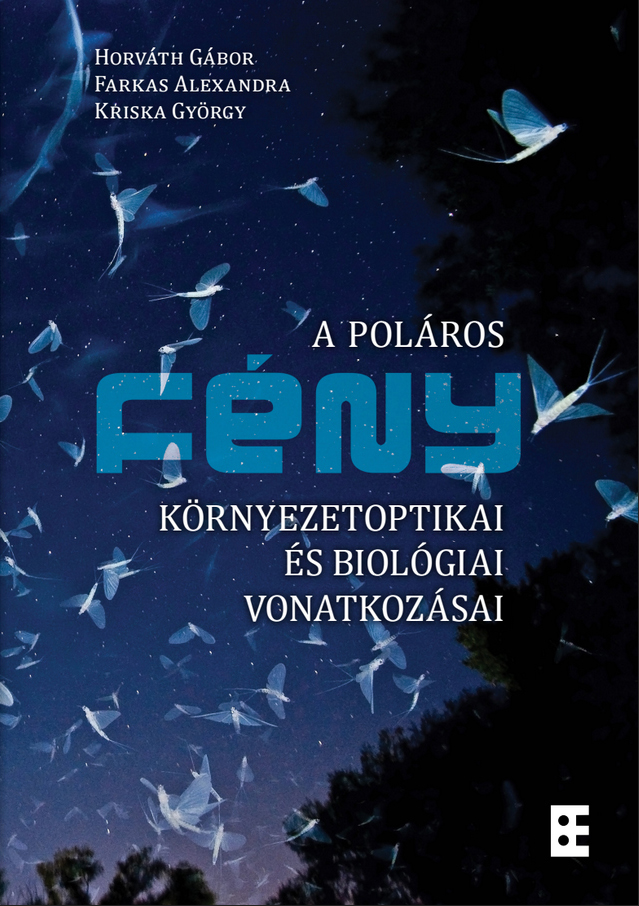Appearance in Nature and Science
NATURE
Ádám EGRI, Ákos HORVÁTH, György KRISKA, Gábor HORVÁTH (2010) Optics of sunlit water drops on leaves: Conditions under which sunburn is possible. New Phytologist 185: 979-987 + cover picture
WaterDropOnLeaf_NewPhytologist-with-cover.pdf
WaterDropOnLeaf_NewPhytologist-supplement.doc
Reviewed in:
[N7] Nature Photonics - volume 4, number 3, page 128 (1 March 2010)
Research Highlights - Environmental Optics: Sunburn myth dispelled
WaterDropOnLeaf_NPH-NaturePhotonics.pdf
--------------------
Gábor HORVÁTH, Miklós BLAHÓ, György KRISKA, Ramón HEGEDÜS, Balázs GERICS, Róbert FARKAS, Susanne AKESSON (2010) An unexpected advantage of whiteness in horses: The most horsefly-proof horse has a depolarizing white coat. Proceedings of the Royal Society B 277:
1643-1650
TabanidHorsePol_ProcB-proof.pdf
Reviewed in:
[N6] Nature - volume 463, number 7283, page 852 (18 February 2010)
Research Highlights - Ecology: Why horses wear white
TabanidHorsePol_ProcB-Nature.pdf
--------------------
József GÁL, Gábor HORVÁTH, András BARTA, Rüdiger WEHNER (2001) Polarization of the moonlit clear night sky measured by full-sky imaging polarimetry at full moon: comparison of the polarization of moonlit and sunlit skies. Journal of Geophysical Research D 106: 22647-22653
Cited in:
[N5] Nature - volume 424, page 33 (2003) by Dacke, M.; Nilsson, D.-E.; Scholtz, C. H.; Byrne, M.; Warrant, E. J.: Insect orientation to polarized moonlight.
--------------------
József GÁL, Gábor HORVÁTH, Euan N. K. CLARKSON, Ottó HAIMAN (2000) Image formation by bifocal lenses in a trilobite eye? Vision Research 40: 843-853
BifocalLensDalmanitinaSocialis_VR.pdf
Cited in:
[N4] Nature - volume 412, pages 819-822 (2001) by Aizenberg, J.; Tkachenko, A.; Weiner, S.; Addadi, L.; Hendler, G.: Calcitic microlenses as part of the photoreceptor system in brittlestars.
--------------------
György KRISKA, Gábor HORVÁTH, Sándor ANDRIKOVICS (1998) Why do mayflies lay their eggs en masse on dry asphalt roads? Water-imitating polarized light reflected from asphalt attracts Ephemeroptera. Journal of Experimental Biology 201: 2273-2286
Reviewed in:
[N3] Nature - volume 394, page 425 (30 July 1998) by Alison Mitchell: News and Views - Ecology: Polarized flight.
--------------------
[N2] Nature - volume 379, pages 303-304 (1996) by Gábor HORVÁTH, Jochen ZEIL: Kuwait oil lakes as insect traps.
--------------------
Gábor HORVÁTH, Euan N. K. CLARKSON (1993) Computational reconstruction of the probable change of form of the corneal lens and maturation of optics in the post-ecdysial development of the schizochroal eye of the Devonian trilobite Phacops rana milleri Stewart 1927. Journal of
Theoretical Biology 160: 343-373
PhacopsRanaMilleriPostecdysialEye_JTB.pdf
Cited in:
[N1] Nature - volume 381, pages 30-31 (1996) by Duncan, I. J.; Briggs, D. E. G.: Three-dimensionally preserved insects.
----------------------------------------
SCIENCE
Ádám EGRI, Miklós BLAHÓ, György KRISKA, Róbert FARKAS, Mónika GYURKOVSZKY, Susanne AKESSON, Gábor HORVÁTH (2012) Polarotactic tabanids find striped patterns with brightness and/or polarization modulation least attractive: an advantage of zebra stripes. Journal of
Experimental Biology 215 (5): 736-745 + electronic supplement
Reviewed in:
[S10] Science - Jane J. Lee: Mystery of zebra's stripes finally solved?
TabanidZebraPol_JEB-Science-Magazine.pdf
--------------------
Gábor HORVÁTH, Miklós BLAHÓ, György KRISKA, Ramón HEGEDÜS, Balázs GERICS, Róbert FARKAS, Susanne AKESSON (2010) An unexpected advantage of whiteness in horses: The most horsefly-proof horse has a depolarizing white coat. Proceedings of the Royal Society B 277:
1643-1650
Reviewed in:
[S9] Science - Science Shots: Bug repellent
TabanidHorsePol_ProcB-Science.pdf
--------------------
Gábor HORVÁTH, Adelinda CSAPÓ, Annamária NYESTE, Balázs GERICS, Gábor CSORBA, György KRISKA (2009) Erroneous quadruped walking depictions in natural history museums. Current Biology 19: R61-R62 + online supplement
Reviewed in:
[S8] Science - Science Shots: Walking the dog
--------------------
Gábor HORVÁTH, György KRISKA, Péter MALIK, Bruce ROBERTSON (2009) Polarized light pollution: a new kind of ecological photopollution. Frontiers in Ecology and the Environment 7: 317-325
Reviewed in:
[S7] Science - 7 January 2009 - Phil Berardelli: When a building is like a pond
http://sciencenow.sciencemag.org/cgi/content/full/2009/107/2
[S6] Science Podcast - Transcript 9 January 2009
http://podcasts.aaas.org/science_podcast/SciencePodcast_090109.mp3
PLP-2009_Science-Podcast-text.pdf
--------------------
Kriska, G.; Csabai, Z.; Boda, P.; Malik P.; Horváth, G. (2006) Why do red and dark-coloured cars lure aquatic insects? The attraction of water insects to car paintwork explained by reflection-polarization signals. Proceedings of the Royal Society B 273: 1667-1671
Reviewed in:
[S5] Science - volume 313, number 5783, issue 7, page 25 (July 2006) Random Samples: Great moments in entomology.
--------------------
Horváth, G.; Varjú, D. (2004) Polarized Light in Animal Vision – Polarization Patterns in Nature. p. 447, Springer-Verlag, Heidelberg – Berlin – New York
Cited in:
[S4] Science - volume 313, pages 837-839 (2006) by Muheim, R.; Phillips, J. B.; Akesson, S.: Polarized light cues underlie compass calibration in migratory songbirds.
[S3] Science - volume 315, pages 995-997 (2007) by Heinze, S.; Homberg, U.: Maplike representation of celestial e-vector orientations in the brain of an insect.
--------------------
Gál, J.; Horváth, G.; Clarkson, E. N. K.; Haiman, O. (2000) Image formation by bifocal lenses in a trilobite eye? Vision Research 40: 843-853
BifocalLensDalmanitinaSocialis_VR.pdf
Cited in:
[S2] Science - volume 301, page 1689 (2003) by Fortey, R.; Chatterton, B.: A Devonian trilobite with an eyeshade.
--------------------
Horváth, G.; Bernáth, B.; Molnár, G. (1998) Dragonflies find crude oil visually more attractive than water: Multiple choice experiments on dragonfly polarotaxis. Naturwissenschaften 85: 292-297
Cited in:
[S1] Science - volume 313, pages 789-791 (2006) by Kokko, H.; Lopez-Sepulcre, A.: From individual dispersal to species ranges: Perspectives for a changing world.

